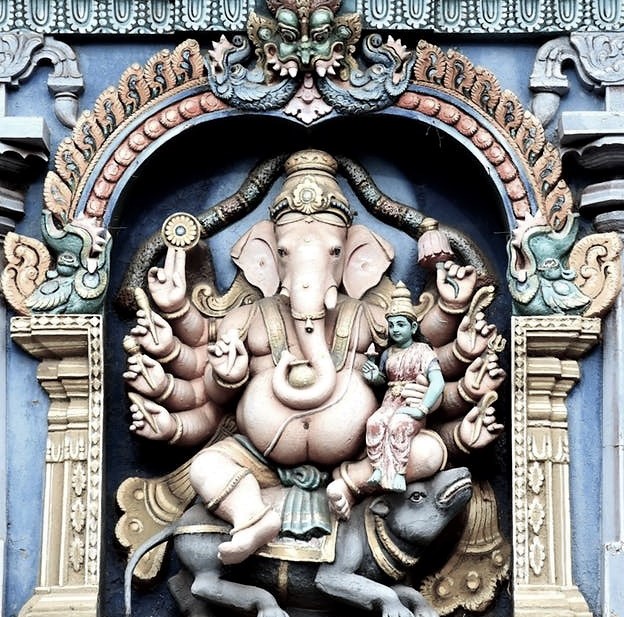- Special FeaturesFoundation Year1000 - 2000 years oldSthala TreeTheertham12 Theertha'sRathamArchitectureDravidian architectureOther Speciality(Divya Desam)
- Sthala Puran
Chidambaram is one of the many temple towns in the state which is named after the grooves, clusters, or forests dominated by a particular variety of a tree or shrub and the same variety of tree or shrub sheltering the presiding deity. The town used to be called Thillai, following Thillaivanam, derived from the mangrove of Tillai trees (Exocoeria agallocha) that grow here and the nearby Pichavaram wetlands. As per Hindu legend, once Shiva and Parvati wanted to judge who among them was a better dancer and wanted their sons Vinayaka and Murugan to judge. Both of them judged in favour of Paravati, after which Shiva was not satisfied. He wanted Brahma to judge, and the competition was held in Thiruvalangadu. Brahma was still not satisfied, and he wanted Vishnu to judge who wanted the competition in Tillaivanam. Shiva performed the Urthvathandavam pose of picking ear ring with legs and wearing them in the ear with his legs. Parvathi was not able to perform the feat and became Kali at Thillai Kali temple.
The Govindaraja shrine is dedicated to Vishnu and is one of the 108 holy temples of Lord Vishnu called Divya Desam, revered by the 7th-9th-century saint poets of Vaishnava (those worshipping Lord Vishnu) tradition, alwar's. Kulashekara Alwar mentions this temple as Tillai Chitrakutam and equates Chitrakuta of Ramayana fame with this shrine. King Kulothunga Chola II is believed to have uprooted the presiding Govindraja image from the shrine. The shrine has close connections with the Govindaraja temple in Tirupati, dating back to saint Ramanuja of the 11-12th century. Ramanujar fled to Tirupati with the utsava (festival image) of the temple to escape punishment. In the 16th century, king Krishnappa Nayak was instrumental in installing the image of Govindaraja back in the temple. There was a lot of resistance from the Shaivites (those worshipping Shiva) against placing the Vishnu image in a revered Shiva temple, but the king was unmoved, and the image was installed in the present form. There is no satisfactory evidence of the co-existence of the Shiva and Vishnu shrines within the same temple built during the same time – there was a dispute in 1849 regarding the rights on the Govindaraja idol and Alwar Sannidhi (sanctum of azhwars) between Vaishnavas and Dikshitars and the position of Vaishnavas was upheld by the district court.
- Architecture
- Alankar of Deity
- Prayers and BenefitsSpecial Vratas and PrayersOfferings to DeityStotras and Mantras
- Festivals10 day Chithirai Vasanth UtsavApril-MayGajendra Moksha
- Sodasha Upcharas
- Prasadhas
- Social ActivitiesAnnadhanMarriageEar BoringHead ShaveDanaasEducation FacilitiesSocial DrivesOther Activities
- Arjita Seva
- Tags

